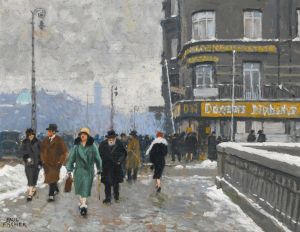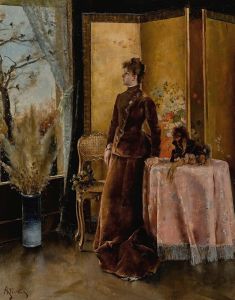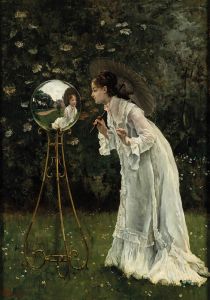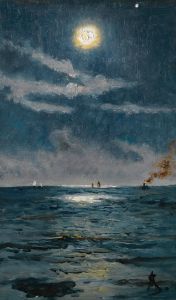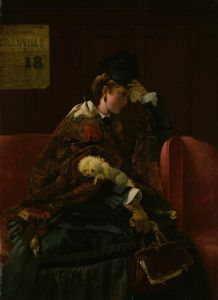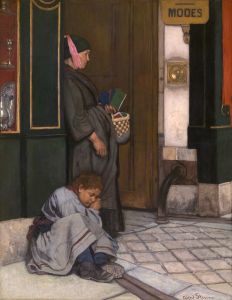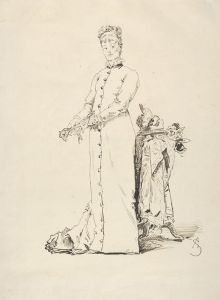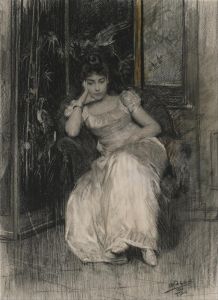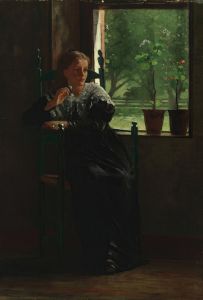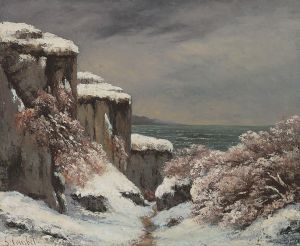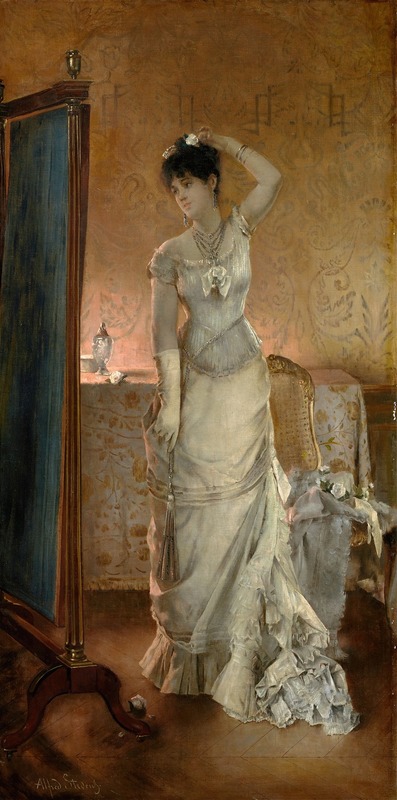
Winter
A hand-painted replica of Alfred Stevens’s masterpiece Winter, meticulously crafted by professional artists to capture the true essence of the original. Each piece is created with museum-quality canvas and rare mineral pigments, carefully painted by experienced artists with delicate brushstrokes and rich, layered colors to perfectly recreate the texture of the original artwork. Unlike machine-printed reproductions, this hand-painted version brings the painting to life, infused with the artist’s emotions and skill in every stroke. Whether for personal collection or home decoration, it instantly elevates the artistic atmosphere of any space.
Alfred Stevens, a Belgian painter known for his exquisite portrayal of women and domestic interiors, created the painting "Winter" in the late 19th century. Stevens was a prominent figure in the art world during his time, celebrated for his ability to capture the elegance and subtleties of modern life, particularly in Paris, where he spent a significant portion of his career.
"Winter" exemplifies Stevens' mastery in depicting the fashionable women of his era, often set against the backdrop of tastefully decorated interiors. This painting is part of a series that represents the four seasons, with each piece capturing the essence and mood associated with its respective time of year. In "Winter," Stevens employs a muted color palette, utilizing soft whites, grays, and blues to evoke the chilly atmosphere of the season. The painting is characterized by its attention to detail and the delicate rendering of textures, from the luxurious fabrics of the woman's attire to the intricate patterns of the room's decor.
The central figure in "Winter" is a woman dressed in elegant winter attire, possibly a fur-trimmed coat or shawl, which was typical of the fashion during the late 1800s. Her pose is graceful and poised, reflecting the societal norms and expectations of femininity and sophistication. Stevens' ability to convey the character and mood of his subjects is evident in the serene expression and contemplative demeanor of the woman, suggesting a moment of introspection or quietude.
Stevens' work is often associated with the Impressionist movement, although he maintained a distinct style that combined realism with a keen sense of modernity. His paintings frequently explore themes of beauty, fashion, and the changing roles of women in society, making them not only visually appealing but also culturally significant. "Winter," like many of his works, offers a glimpse into the lifestyle and aesthetics of the bourgeois class in 19th-century Europe.
The painting reflects Stevens' interest in the interplay between light and shadow, a technique he used to enhance the three-dimensionality of his subjects and create a sense of depth within the composition. This approach aligns with the broader artistic trends of the period, where artists sought to capture the effects of light and atmosphere in their work.
Alfred Stevens' contributions to the art world were recognized during his lifetime, and his paintings continue to be appreciated for their technical skill and historical insight. "Winter" remains a testament to his ability to blend the personal with the universal, capturing the essence of a season while simultaneously offering a window into the cultural and social dynamics of his time. The painting is housed in various collections, and its enduring appeal lies in its elegant portrayal of a moment suspended in time, encapsulating both the beauty and transience of life.






